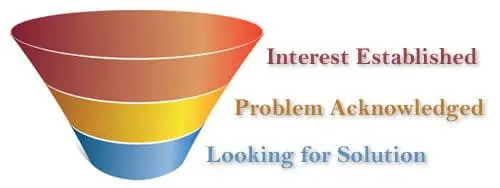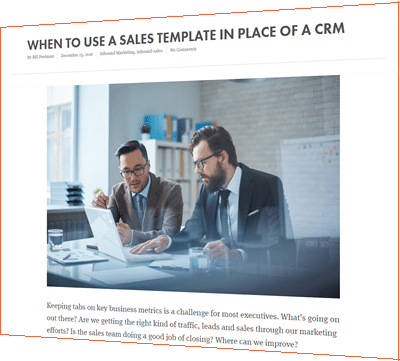The Corporate Executive Board released survey results that indicate customers are delaying their contact with sales people until they are well into the middle of the sales funnel. As a result of this, marketers now need to address the middle of the funnel with the right messaging strategy, customized to the appropriate marketing personas and buyer’s needs.
 Middle of the funnel purchasing needs
Middle of the funnel purchasing needs
The survey of 1,900 B2B customers finds four types of middle-of-the-funnel purchasing needs that should be addressed:
- Number Crunchers: Bottom-line focused buyers who need quantitative proof of the overall purchase value beyond generic calculations of purchase costs.
- Innovators: Growth-seeking customers seeking purchases that help them become more innovative in terms of business model, process or product capabilities.
- Risk Avoiders: Skeptical customers focused on understanding what might go wrong once a purchased product/service is implemented in their environments.
- Service Seekers: Relationship-minded buyers seeking good, reliable Sales and customer support.
Lead nurturing in the middle of the funnel
These purchasing needs can each be addressed through a well-designed lead nurturing program. This program must take into account the hard work of connecting personally in an automated fashion.
An effective approach to meeting these needs has multiple elements such as:
- landing pages
- auto-response email communications
- CRM integration and workflow triggers
- sales notifications
- lead scoring
- decision tree logic
- newsletter communications
- form capture
- link click metrics
A marketing team that can implement an effective middle-of-the-funnel buying process requires diverse talents, including strategic thinking, information technology, graphic design, thought leadership, and a strong grasp of analytics.
Middle-of-the-funnel marketing
Middle-of-the-funnel marketing strategies are cross-discipline. There is a convergence of various talents, and an influx of information from a variety of sources. Typically, such an effective team is gathered from in-house sales, marketing, and IT staff. Gaps are filled by outside consultant/partners that have the expertise to augment your existing team for real success.





